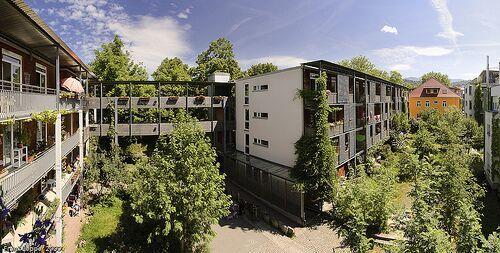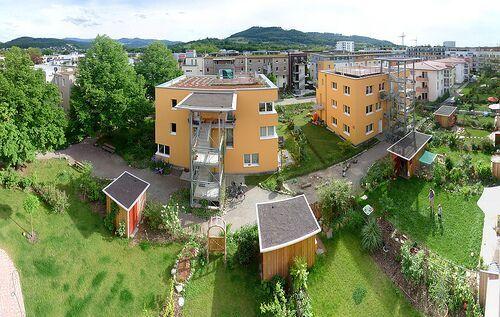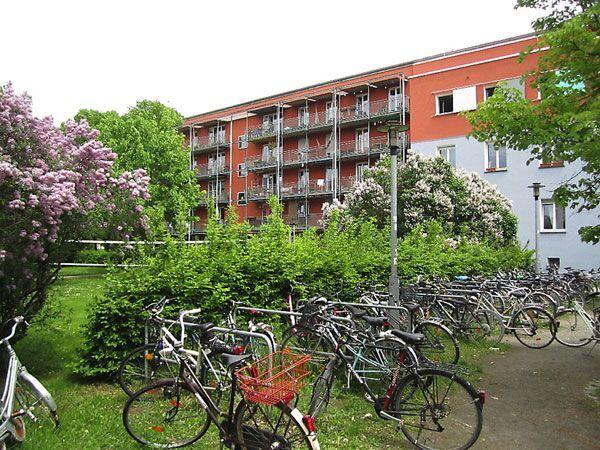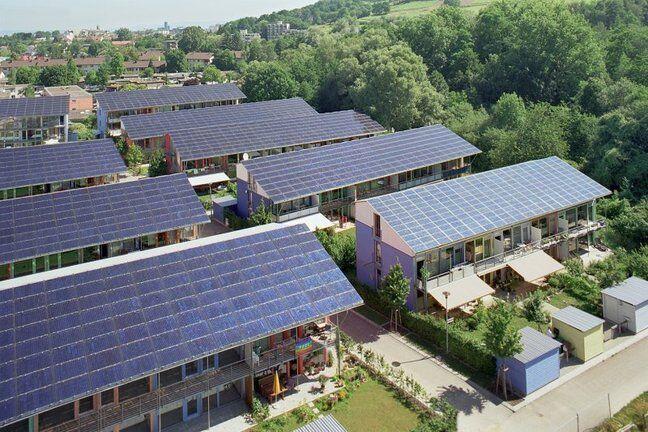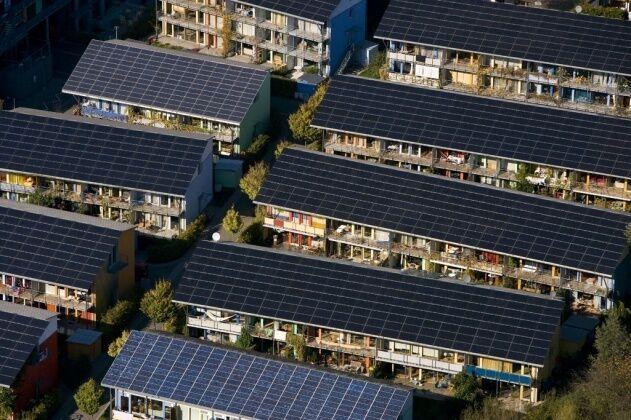Vauban ecodistrict, Freiburg
Last modified by the author on 27/11/2015 - 12:06
- Address 1 - street : 79100 79100 FRIBOURG-EN-BRISGAU ALLEMAGNE, Germany
- Population : 5 000 hab
- Number of jobs : 600 jobs
- Starting year of the project : 1996
- Delivery year of the project : 2006
- Key words : far-reaching participation, Co-housing, car sharing
Certifications :
-
41 ha -
20 000 000 €
Programme
- Housing
- Public spaces
- Green spaces
CO2 Impact
40 000 tCO2
Project progress
- Operational phase
Procedure type
- Urban développement permit
Key points
- Governance
- Quality of life
- Mobility
- Resources
Certifications
- Ecodistrict national label
More info
http://eurbanlab.eu/Data reliability
Assessor
Type of territory
Climate zone
[Cfb] Marine Mild Winter, warm summer, no dry season.
More info
http://www.vauban.deQuality of life / density
Design for a sense of place
The Baugruppen in Vauban have been largely successful to create a living environment in which they feel comfortable. The focus on decreasing car-dependency and creating a green, walkable neighbourhood adds to the creation of a sense of place. Moreover, different building heights & colors add visual and architectural interest.
Social diversity
Failed to reach the social mix target
Social inclusion and safety
The far-reaching participation and social work that was organized by Forum Vauban gave voice to the people's needs and supported their initiatives, invented innovative ecological and social concepts, and increased the communication and participation in the development.
Affordable housing
The co-housing concept resulted in a marked reduction in the individual construction costs for Vauban residents at the time of development (between 57% and 81% of the price of dwellings bought on the open market). Being transformed from a brownfield site to a vibrant district that can only be described as a middle-class district1, the homes in Vauban have risen in price since their construction, but have remained affordable. Pioneering residents have seen their homes rise in value, going from an average construction price of €1800 per m2 in 2006, to €4000 per m2 on the open market to date. The latter is comparable to other middle-class neighborhoods in Freiburg.
Mobility strategy
The ecological traffic/mobility concept led to a reduced number of private cars (40-50%), effective public transport, a convenient car sharing system, and an overall high quality of life.
Walkable urban space with good public transportation
The aim of the district was to reduce car-use and increase the walkability of the area. Pedestrian and bicycle paths in Vauban create a well-connected, efficient and green transportation network throughout the district. Twelve car sharing vehicles are available across Vauban, five of which are located in the solar parking garage. Car use in Vauban is around 50% of that recorded in the city of Freiburg, with non-motorized-transit accounting for almost two thirds of all trips. Across the city as a whole, the bicycle accounted for 34% of commuter trips in 2002, compared with 61% and 91% for Vauban’s car-owning and car-free households respectively.
Climate adaptation, resources conservation, GHG emissions
The new residential district in Freiburg performs exceptionally well on the indicators in the Planet category. Mainly due to the low consumption of final energy and its share of renewable energy sources.
Energy sobriety
The CHP-plant in Vauban operates on wood-chips from the nearby forest and provides in 73% of the total renewable energy supply, and in 100% of the heating demand in the district. Over 90% of the total energy consumption in Vauban is produced by renewable energy sources, of which the CHP-plant provides the biggest part.
All buildings were built with stringent low-energy standards (65 kWh/m2/y), yet most buildings go beyond that standard.
Large share of renewable energy sources in the overall energy demand (>90%)
Reduction in energy bills
Vauban residents benefit from a reduced energy bill by as much as 85% on a yearly basis. Some of the pioneering blocks in Vauban have built PassivePlus buildings, generating more energy than they consume, effectively reducing their energy bill even more.
Buildings





